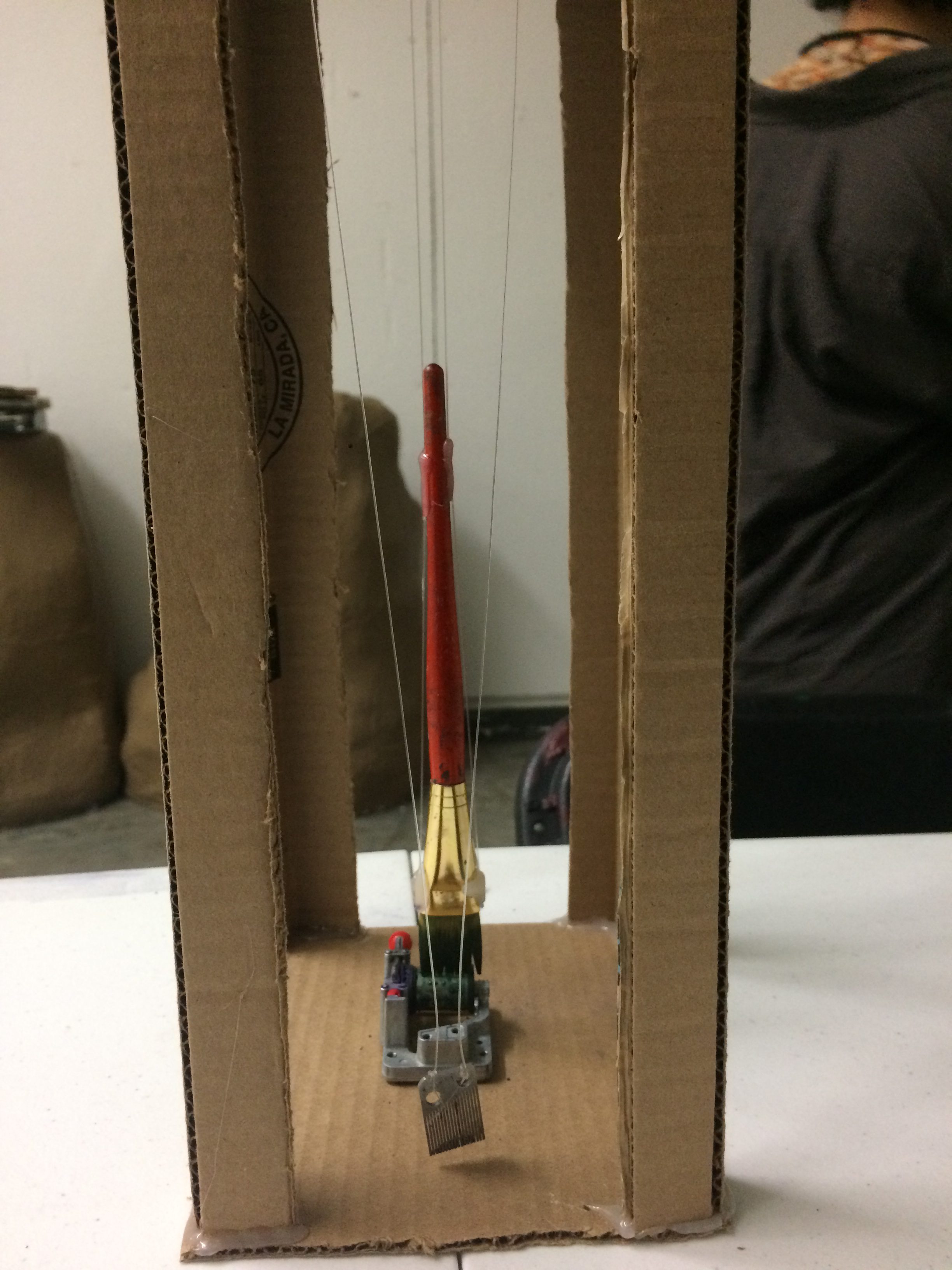

I am going to construct a hanging, nest-like installation made of found branches, sticks, ivy, and dried flowers. I will hang vine charcoal from the branches, using a pendulum-like motion to create a drawing on a piece of newsprint that has been placed on the ground. The viewer will stand in the center and manipulate the machine by pulling strings attached to vine charcoal. I will wrap twine around the hanging vine charcoal and make a small handle so that the user can simply pull the handle and the charcoal will swing in a pendulum-like motion. This is to give the nest a machine-like feel.
“At the heart of nest-building, at the heart of art-making, is this impulse to transform materials,” she said, “to gather bits and pieces of things that through a kind of magical leap become these objects that speak to us in so many different ways.”- Elizabeth Rooklidge
I see birds as artists, and nests are their art. When you step inside my nest, you will become the bird, harnessing found materials that birds use to create a drawing. This machine is making the statement: you don’t need man-made technology to create something special, look towards the natural world and the art that nature has already been creating for millennia.
I took huge inspiration from Nicolas Holibar, who is about to install a series of 12 large wooden birds in New York City this April. He constructs large bird sculptures out of found objects (particularly plywood) as a commentary on climate change and its effects on local bird migration through New York City.
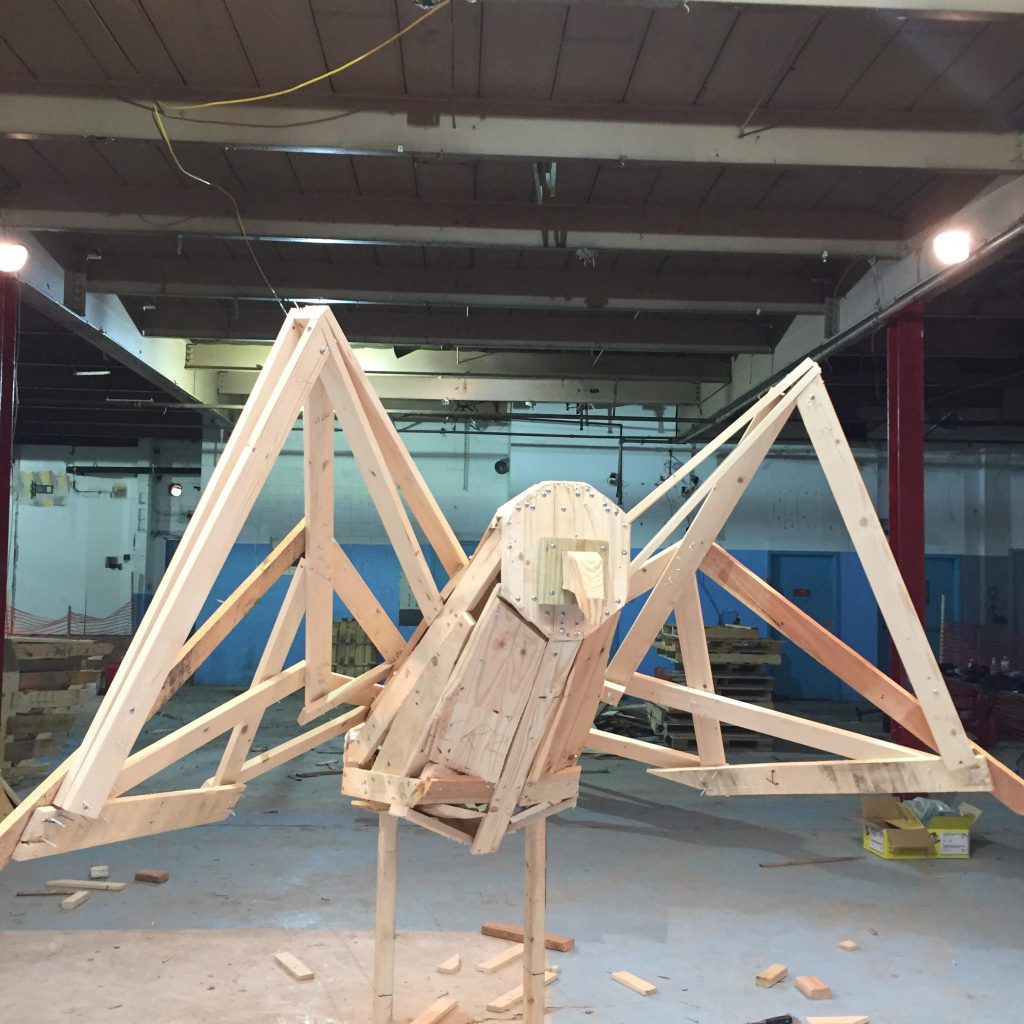

My machine is a commentary on how human urbanization and development has effected the forests and birds who inhabit them. The piece is anti-(human)machine and anti-climate change. The nest is the symbol of the home we are losing to human development and climate change. There will be a lot of space between the branches to represent deforestation. The materials I collected are materials local birds use in their nests to form a connection with local birds specifically.
Each Spring there is a symbiotic relationship between the birds and the trees. In the early spring, birds make their nests in the trees, and the sound of their chirping stimulates leaf growth. As the migration habits of birds change do to climate change, so does the growth of trees.
The goal of my machine is to get the user to get in the mindset of a bird in a nest, and to start seeing birds as artists and their nests as art instead of just a home. Hopefully through this connection, the user will think about the greater implications of climate change, deforestation, and industrialization. I wanted to create a “natural” machine in protest of the industrial machines that are killing our planet.
“The reason I came into this project was because of the material I use. It’s just a great connection to the message we’re sending about the birds and the environment.” – Nicolas Holibar
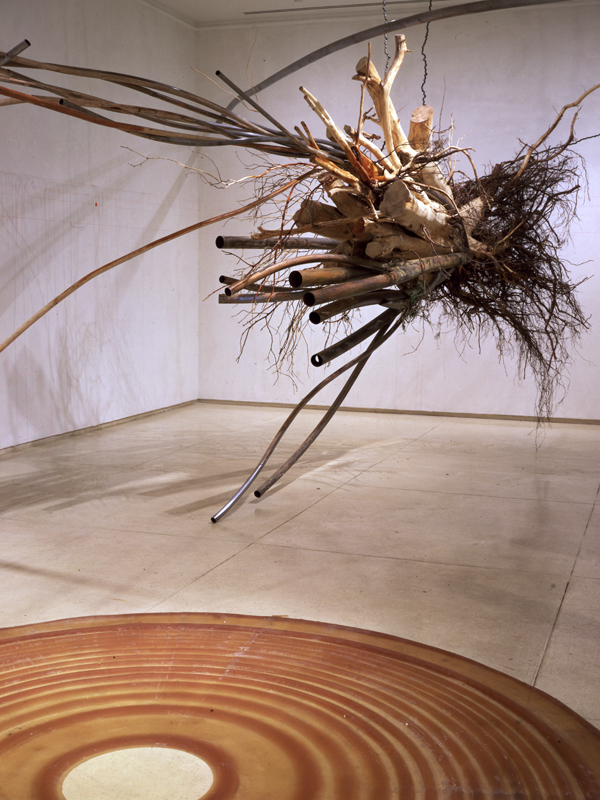
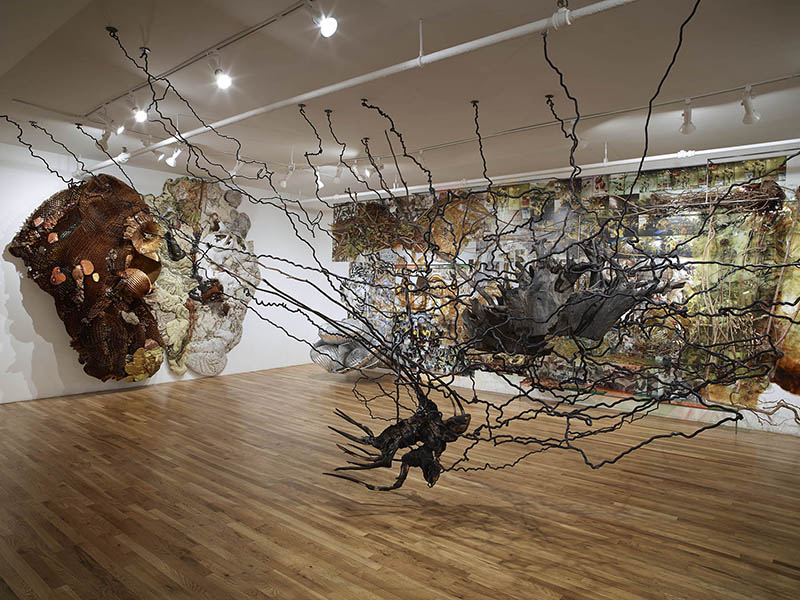
I took more of an aesthetic inspiration from Judy Pfaff, one of the pioneers of installation art. She was involved in “the Art of the Nest” installation at the Katonah Museum in 2016, and created a nest from found objects. However, I was more inspired by her “Second Nature” and “Round Hole, Square Peg” installations, which include a large web of wire, string, branches, and driftwood. I liked the chaotic energy of her work and thought it would translate well into a piece about birds and the natural world.

“At the heart of nest-building, at the heart of art-making, is this impulse to transform materials,” she said, “to gather bits and pieces of things that through a kind of magical leap become these objects that speak to us in so many different ways.”
– Elizabeth Rooklidge
I made a hanging, “exploded” nest from materials I gathered in the woods around Yonkers. I spray painted several of the branches metallic gold, but everything else I left in it’s original state because I think it reflected the subtle color palette of the New York winter very well. There’s a lot of space between the branches and they’re all suspended by clear fishing line so it looks like a freeze frame of an exploding birds nest. I also added sprigs of small white flowers, pieces of bark, smaller sticks, and some ivy wrapped around a few of the branches to fill in the piece and get a better representation of the New York landscape in the winter.
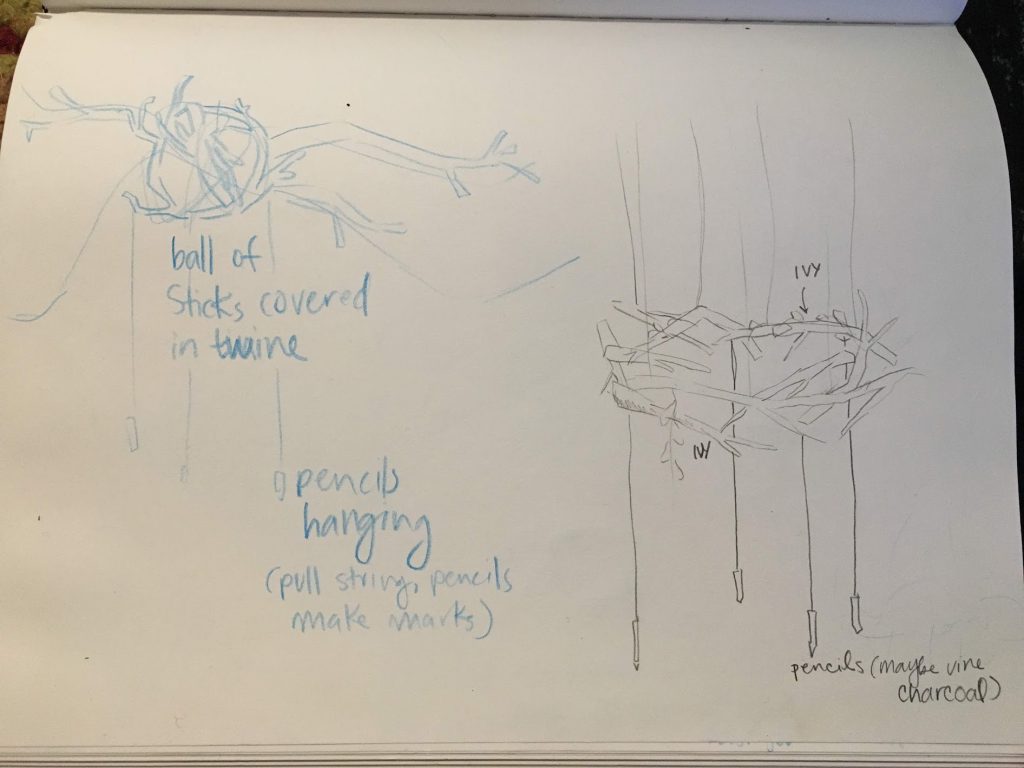
I was originally inspired by Nicholas Holibar who installed a 12 piece series around Manhattan this April. This installation is titled Birds on Broadway: The Audubon Sculpture Project and it explores the relationship between climate change and bird migration in New York City. My original intention for this project was to have people stand inside the nest and use the nest to draw by pulling strings attached to vine charcoal. My hope was that by standing in the nest and “becoming the bird”, the user would not only start to see birds nests as works of art instead of simply a home, but also that they would feel a connection to the materials and act of creating with the nest. Through that connection they would hopefully think about the greater implications of climate change, deforestation, and industrialization. As my original post stated, I was hoping to make “a ‘natural’ machine in protest of the industrial machines that are killing our planet”. While I still love this idea, as I was constructing my machine I realized I loved the shape of the nest as it was, without the hanging vine charcoal and I felt like adding the charcoal would feel forced. Instead of a person stepping inside to manipulate the machine into making a drawing, I decided to simply use the shadows the nest casts on the wall as the “drawing” my “machine” creates.
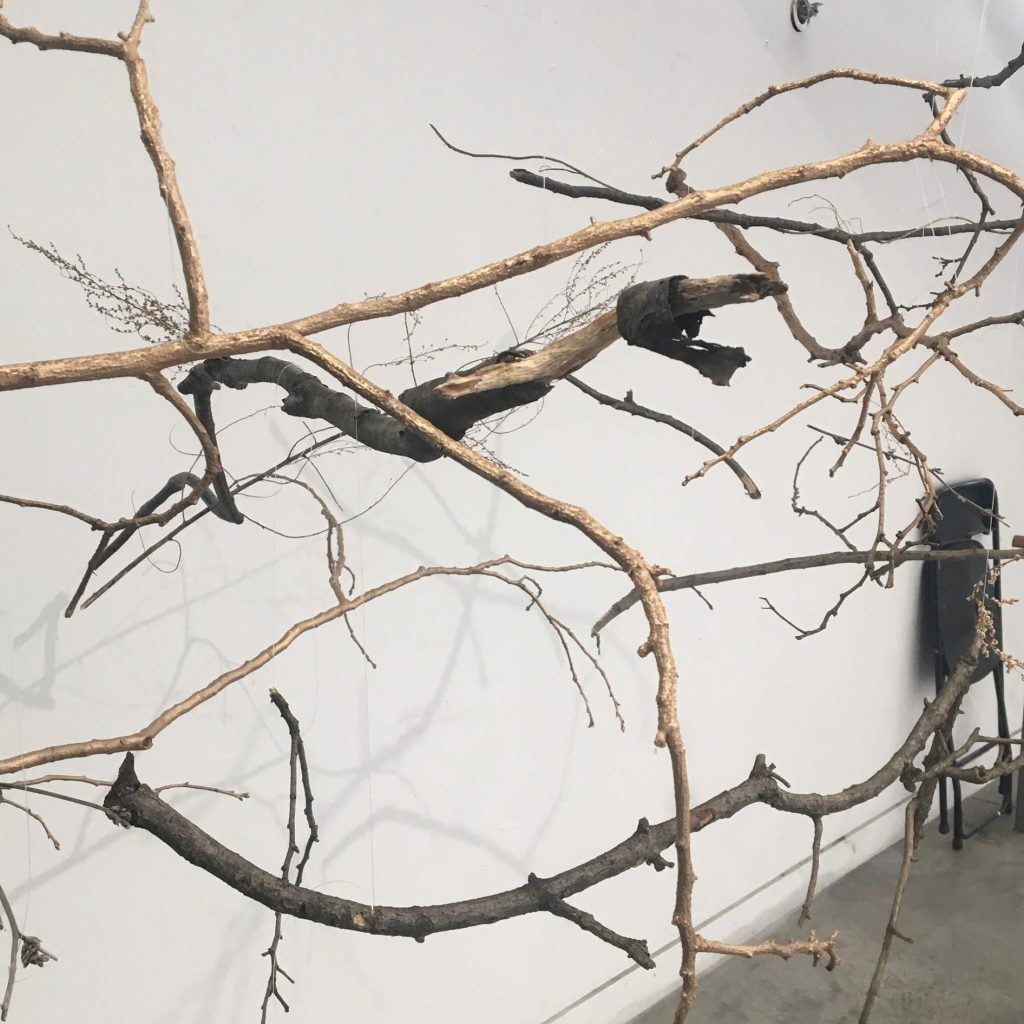
The other artist I drew inspiration from was Judy Pfaff. She was more of an aesthetic inspiration for me, and I think my installation has even more in common with her work than Holibar’s since the changes I made to the function of the machine. She made several pieces that included hanging driftwood, wire, branches, and metal. While the shadows her installations cast are fascinating, they are not one of the main components of her work the way they are for my nest.
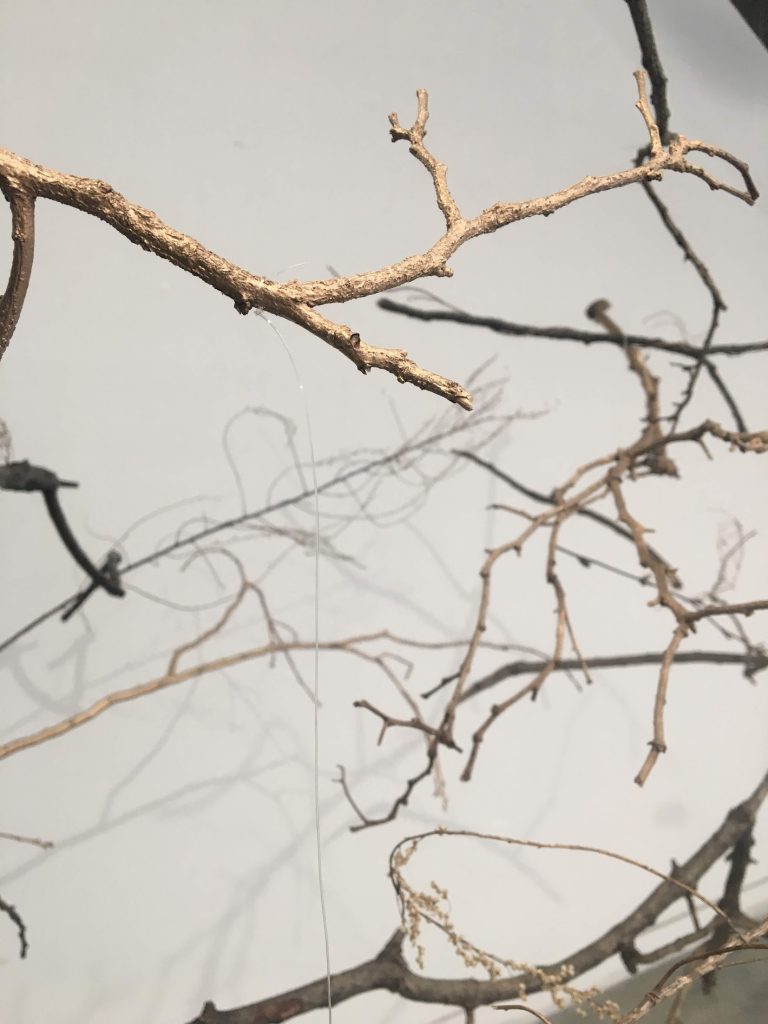
The nest is not entirely static, the branches (especially the lighter sticks) tend to move slightly on their own. Some of the smaller sticks will slowly rotate on their own, but most of the nest will stay still. However, I like the way movement effects the shadows, so moving it to create different “drawings” is a fun way to interact with the machine and have some control over what it creates. Unfortunately, I don’t think most people walking by will want to touch it as it appears very delicate.

If I had more time to work on this piece, I would love to experiment with the lighting more. It would be interesting to try lighting the nest from different angles, using different colors, or maybe moving it into a darker space where I could control the lighting a little better. We also discussed starting the project in one location and having a part of it appear in another location (ie coming out of the wall in the bathroom or on top of the stairs, almost as if part of it was teleported to a different spot). I would also have loved to have more time to fill in the nest so it was a little more dense than it is currently. Part of that also has to do with the location- the more branches there are, the harder it is to maneuver the ladder and safely hang the remaining branches.

